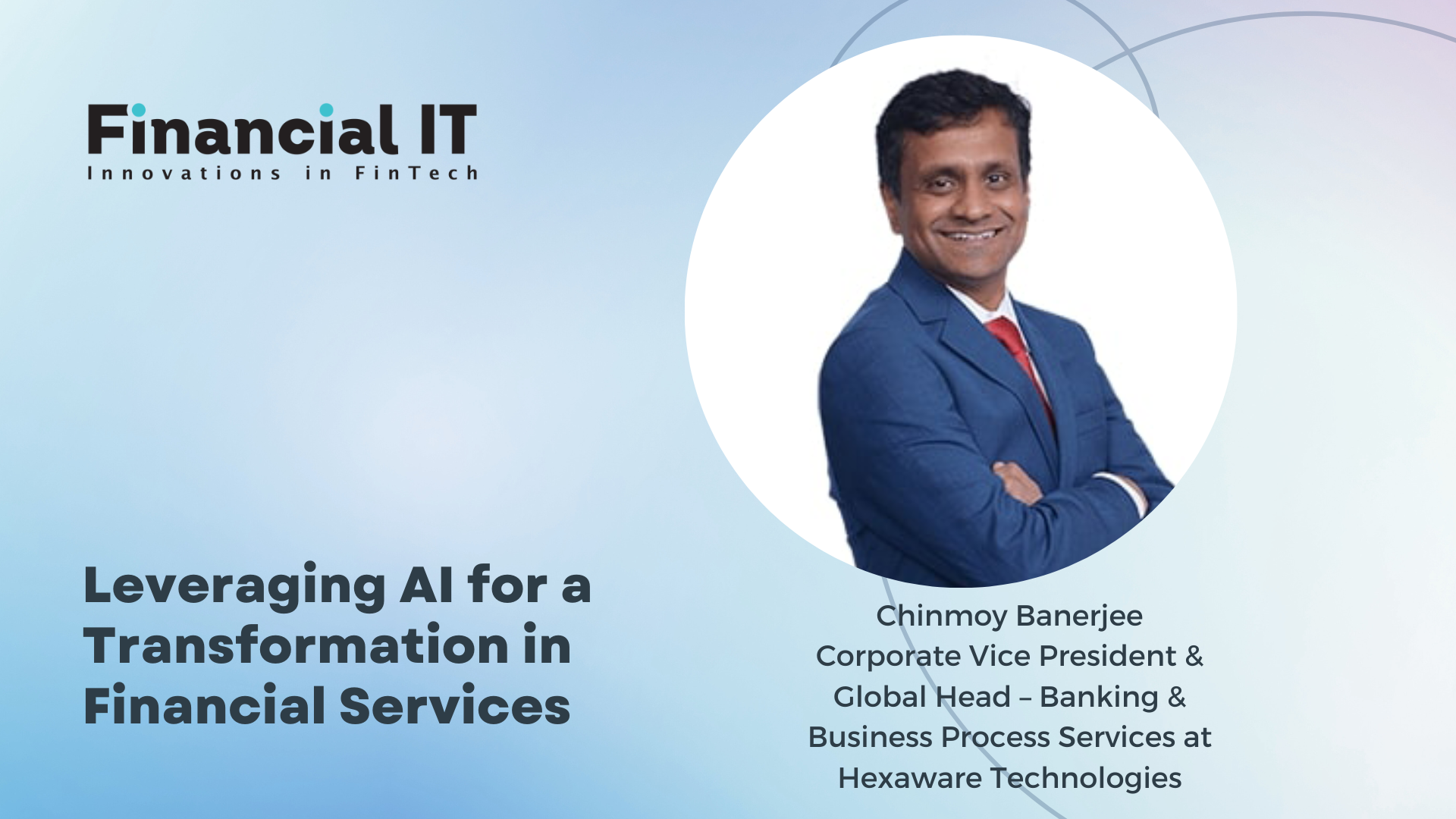Leveraging AI for a Transformation in Financial Services

- Chinmoy Banerjee, Corporate Vice President & Global Head – Banking & Business Process Services at Hexaware Technologies
- 17.08.2023 07:00 am #ai #financialservices
In an ever-evolving financial landscape, Artificial Intelligence (AI) has emerged as a transformative force. It's reshaping the world of finance in profound ways, ranging from enhanced decision-making to personalised customer services. For example, Bloomberg has created its own large language model trained on its Terminal data, to enhance investment decisions.
The potential of AI is vast, and this is clearly illustrated by the fact that more than half of large financial institutions have incorporated it into their operations. However, understanding the unique applications of AI is key to successful adoption.
Realising the potential of AI
AI has shown significant potential to revolutionise a multitude of processes. For instance, it could enable banks to ensure their customers are no longer constrained by the need to visit a physical branch or make phone calls. Instead, customers could use an AI-powered chatbot armed with Natural Language Processing (NLP) and Machine Learning (ML) capabilities, functioning as a personal assistant. This virtual assistant could be used to understand customer preferences and behaviour, facilitating tasks such as bank statement requests, payments, and fund transfers through simple voice commands. Moreover, AI could use transaction history and spending patterns to provide personalised product and service recommendations, taking customer service to a whole new level. Whilst investment advice could be made available through AI-enabled robo-advisors, tailored specifically to customer needs. Yet, we have only begun to scratch the surface of AI's potential in the world of finance.
Generative AI or GenAI, is an area of AI that's incredibly creative and offers significant advantages for the banking industry. This branch of AI can create a wide array of data - be it text, images, audio, or even 3D objects - drawing inspiration from existing data and then crafting new and unexpected outputs. It plays a pivotal role in mass advisory for investments, allowing banks to explore multiple data sources and offering insights tailored to business needs. But the benefits of GenAI go even further, stepping into areas like electronic Know Your Customer (eKYC), reducing costs, and speeding up due diligence processes. It enhances KYC procedures by providing continuous updates like alerts for expired documents, reducing the cost of ownership by 30-40 per cent. GenAI also aids in underwriting processes. By predicting risk profiles, it reduces the need for human intervention, saving up to 50 per cent of the time and effort. For example, in the case of a small business owner looking for a loan, GenAI could sift through their business plan, making the approval process quicker and easier.
The many faces of AI
As customers and banks alike enjoy this bespoke AI-powered experience, there's a whole other side of AI working behind the scenes. Document management, for instance, is undergoing a digital revolution. Instead of needing to analyse stacks of paper loan applications and forms, AI could transform them into a machine-readable format using Optical Character Recognition (OCR). This eliminates human errors and speeds up processing times, creating a seamless, efficient banking experience.
Pervasive AI is like an invisible helper that’s constantly working to improve banking. It makes tasks faster and more efficient, like eKYC procedures, drastically reducing the time it takes to approve new corporate accounts. It can even monitor transactions and alert financial institutions in real-time, saving banks up to 50 per cent on human intervention and 60 per cent on non-compliance costs. Pervasive AI ensures banks can make data-driven, intelligent decisions. It's also revolutionising the way banks fight against fraud, training algorithms to increase detection accuracy and speed. This form of AI is also fine-tuning customer services, including the ability to curate personalised offers.
But AI's role in the banking experience extends far beyond transactions and advice. Ubiquitous AI is gradually turning banks into a lifestyle partner. This is AI that's so integrated into the customer experience, that it's as natural as breathing. This invisible aide is transforming banking services into a contextually aware, user-friendly, and streamlined experience. It's like having a virtual personal assistant that is always learning about the customer, enhancing their banking experience with every interaction. For example, these capabilities could be embedded into mobile banking or payments apps so that when customers go to make a purchase in-store or online, they receive a notification offering an AI-driven suggestion about which card they should use for a particular transaction. This will optimise their loyalty rewards, for instance receiving cash back. Even more impressive, AI can be integrated with IoT and connected devices to enable succinct, smart payments against a fraction of utilisation, such as paying for electricity or water consumption. It's like a pay-as-you-go model, which is especially beneficial for start-up businesses that can now pay for precisely what they need, only when they need it. AI is even making strides in tackling complex problems such as regulatory compliance and fraud detection.
The future of banking with AI
While all these scenarios seem revolutionary, they are rapidly becoming a reality. As we move toward this AI-driven future, it's crucial for banks to have clear goals and the right digital partners. In doing so, they're not just adapting to change - they're pioneering it. In essence, AI is setting banks on a path to more personalised, efficient, and intuitive banking experiences. With a strong foundation for AI adoption, banks are on the cusp of revolutionising their business models, gaining a definitive competitive edge, and setting themselves up for future success.
























